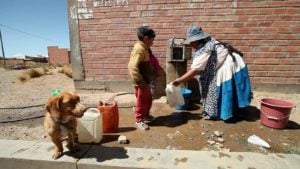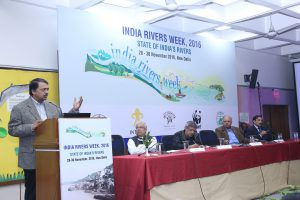Bolivia is suffering its worst drought for 25 years, one so severe that President Evo Morales has decreed a state of emergency and imposed water rationing throughout the country.
“It is because of climate change,” said Morales, who warned: “it’s going to get worse”.
Experts say Morales’ explanation is only partly right and also blame excessive water use in industry and poor infrastructure. The United Nations World Meteorological Organisation (WMO) says 2016 will be the hottest year in history. The El Niño weather phenomenon was particularly intense during the first half of this year, and although it has now subsided, climate change caused by greenhouse gases will not, warns Petteri Taalas, secretary-general of the WMO.
“Bolivia is one of the countries which has been most affected by the El Niño phenomenon. Reservoir levels are very low [at] 5% or 1% [of their capacity]. It’s a critical situation,” said Jose Marengo, of the Intergovernmental Panel on Climate Change (IPCC), in an interview with Diálogo Chino.
In order to supply the capital La Paz, which has approximately 400,000 inhabitants, the president has ordered the drilling of 60 wells and the installation of a number of 10,000 litre reservoirs. The El Alto region adjacent to the capital is home to a population of about 850,000 people, mostly low-income families who descend on the capital in search of water. The region is also frequently a site and source of protests against the government.
“In five years, El Alto will have one million inhabitants, with no drinking water infrastructure whatsoever,” Pedro Morazán of the German Institut Südwind told Diálogo Chino. He added: “Since the water doesn’t come from above, the people come down to get water. They have dug up to 300 metres to get water. They construct wells. But the water there also runs out.”
Morazán explains that under normal circumstances water flows down to the city from the Andes mountain range as snow and glaciers melt. Today, however, snowfall is increasingly rare and snowpack is receding quicker as a result of global warming.
According to Jorge Molina Carpio, of the Institute of Hydraulics and Hydrology at the Universidad Mayor de San Andrés in Bolivia, about 15% of the water supply to La Paz and El Alto comes from the glaciers.
Morazán cautioned that similar conditions led to the current crisis in Syria. About 20 years ago, he says, the government ignored the problem of water shortages, and the deteriorating situation meant people migrated to Damascus and Aleppo. The government was not prepared for this large-scale internal migration.
The Bolivian government is partly to blame for the country’s water crisis, the experts said, as around 40% of potable water is lost through poor pipes, which authorities should have invested in. In developed countries loss through poor infrastructure is around 5%. “They have not learned from the past. This isn’t the first time that Bolivia has suffered from drought,” Marengo said. Nor does Morales’ response by firing top water officials help the situation as the government could have anticipated the increased demand for drinking water in such places as El Alto.
President Morales said the crisis would be worse and would affect more Bolivians if it weren’t for state irrigation and water provision programmes. He also rejected, as rumours on social media had suggested, that an unnamed Chinese mining company was using large quantities of water from the Illimani glacier, on which La Paz depends.
Mining contaminates water resources, the experts said, as does its use to generate energy. Morazán says that Bolivia and neighbouring Peru have gambled on an extractive development model and are contaminating rivers as they promote natural resources. “Now everything has to change, the development model and the energy we use. Renewable energy sources are needed,” he said.
Bolivia’s people also lack experience in water conservation: “Latin Americans are used to an abundance of water. They don’t have the same habits as residents of Mali, for example, where they treat water as a scarce and finite resource,” Morazán said.
Marengo says this type of behavioural change is vital as the population and temperature increases, and the volume of water decreases.
According to data from the vice ministry of social defence, the drought has affected 290,000 hectares of productive land, 360,000 head of cattle, and eight of Bolivia’s nine Bolivian states, known as departments. The government has permitted the import of maize to feed poultry and to try to avoid food shortages.





